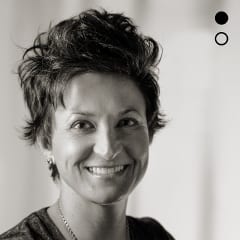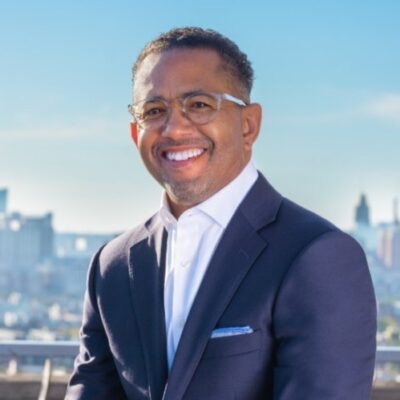Not a passenger in the ride of her career at Switch: Liberate Your Brand, Annie Castellano’s natural curiosity drove her creativity, elevating her to positions usually dominated by men.
Thirst for knowledge and observing the world kept Castellano more than engaged in exhibit design and build, immersive health care environments and project strategies for over 14 years at Switch: Liberate Your Brand, an independent experiential marketing agency based in St. Louis. After receiving several promotions at the company, Castellano became a rarity in her field — chief creative director.
 “Women in leadership positions are still under-represented. It’s rare to see women in the creative side of business,” she said. “There is an entire conference or movement called the 3 Percent Conference. It’s based on the statistic that only 3 percent of creative directors are women.”
“Women in leadership positions are still under-represented. It’s rare to see women in the creative side of business,” she said. “There is an entire conference or movement called the 3 Percent Conference. It’s based on the statistic that only 3 percent of creative directors are women.”
Although the ‘old boys club’ still exists and may intimidate career-oriented women, according to Castellano, it isn’t that way at Switch.
“I’ve had a lot of support, especially from men. My boss Mike O’Neill has been my mentor. He taught me pretty much everything I know about leadership and how to navigate the landscape,” she explained. “It can be a hard lifestyle; it’s hard to have a family and be [chief] creative director. The hours can be very demanding, but Switch isn’t like that. We work hard, but we try to be smart about it and manage schedules versus are schedules managing us.”
While trusting and supporting the 35 employees in her department, Castellano also runs Switch’s health care marketing business in which she oversees experiences that cater to different groups in the sector.
“Nurses and medical librarians tend to have a good sense of humor. We know with them that they want to be taken on a journey, and it’s okay for that journey to be fun,” she said. “When you compare them to medical administrators, like chief medical officers, they tend to have a lower tolerance for anything that could be perceived as frivolous. For them, more serious and assertive activities or engagements tend to work better. They don’t have time for playing games, but they do still have time for useful tools and experiences that brings information.”
Specially tailored to grab the attention of medical administrators, a traveling experience highlighting a medical publishing company’s online reference tool is something Castellano said she is particularly proud of. Similar to Google’s search engine, but for doctors, the online reference tool makes it possible to search a major database of authoritative and credible medical information, but not every medical professional knew to use it.
“It’s difficult to get someone to try a product like that without any guidance. It can be intimidating and a bit overwhelming. Some may believe ‘Why would I go through the trouble of trying to learn that before I know I need it?’” said Castellano.
The experience occurs in a re-designed semi-truck that travels around the country to visit medical professionals in and outside hospitals.
“We have well-trained brand ambassadors. As administrators come by the experience, they talk to them in a way that makes sense to them. We’ve gotten them to spend just shy of 15 minutes with us exploring the product. That’s us understanding the personas that we’re dealing with, what their motivations and priorities are and bringing and building an experience that works for them,” she explained. “It has been successful. It’s different for the health care industry to do that type of marketing. It’s liberating that space.”
Switch’s approach to liberating brands through immersive experiences is handled a bit differently with health care clients.
“The basic tenets of experiential marketing, exhibits and events transfer, but there are some differences. There are basic restrictions on the language we can use — the way that we can depict patients or doctors, and even the type of giveaways we are allowed to bring in to the booth or experience for lead generation,” she explained. “Pharma companies can give gifts, but they have to be educational like a book or poster of a periodic table.”
Considered a conservative industry, health care is undergoing liberation, according to Castellano, while remaining serious and intellectual.
“For health care clients, it’s a dynamic time. There is new technology and new tools for legislative compliance,” she added. “Clients are trying to keep on top of what new legislation is going to mean to them and how to remain compliant, competitive and profitable. Patients are looking at hospitals and institutions for more wellness-based care that goes beyond addressing individual pieces and parts. This translates in how we market to them. It’s changed the way they spend. It’s changed their willingness to take risks. It’s a good time for an agency like us where liberation is at the heart of it.”
New legislation that Switch makes a point to stay informed about is the Affordable Care Act. The company is monitoring how the Act affects its health care clients and what that could mean for experiential marketing.
Switch: Liberate Your Brand’s health care clients include hospital systems, physician providers, medical products and devices, and clinical information resources, such as Ascension Health, Elsevier, Essence Healthcare, Covidien and Express Scripts. The company has designed exhibits for Primerica, Budweiser, Elsevier, Girl Scouts of America and Lion Forge, among others.
See related article: “The 3 Percent Conference isn’t just a woman’s issue.”































